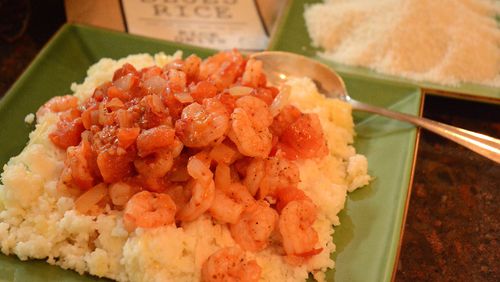It’s easy to forget that many things in the center aisles of the grocery store have a life that’s as seasonal as the heirloom tomatoes at your local farmers market. Rice is one of those staples that we forget has a harvest window like that of any other plant.
At his family farm in Ruleville, Mississippi, David Arant Jr., of Delta Blues Rice (deltabluesrice.com), grows rice, about 1,000 acres of it. They've been growing rice since the 1970s.
Warmer weather this year encouraged the farm to begin planting their rice in March, finishing up in April. Planting is staggered over several weeks so the harvest can be staggered as well. “We need one or two rains right after we seed the rice to ensure we get a really good stand. If we don’t get rain, we have to water. We let the rice grow to about six inches tall, and then we put 2 to 3 inches of water over the fields.”
Those pictures you’ve seen of rice fields covered with water? That’s the result. Having inches of water standing on the field keeps the weeds down.
Come the end of July or early August, the water is drained and the field dries out so that harvesting equipment won’t get stuck in the mud. Those harvesting combines weight about 30,000 pounds. Rice plants at that point are about three feet tall and harvest generally begins in August and goes into September.
Freshly harvested rice has a moisture level of about 20 percent. It’s dried for about a month until the moisture level is about 12 percent and then it can be milled.
But Delta Blues Rice also has its own mill where it processes a small percentage of the rice it grows. That rice has been so well received that it was a 2016 winner of a Garden and Gun “Made in the South” award and a winner of a Southern Living 2016 Food Award.
“We’ve been growing rice on our farms since the 1970s but started our own milling in 2014. So many people don’t even know that rice is grown in the United States. We like showcasing what the American farmer is doing.”
The farm grows one variety of long grain rice and it becomes “white rice,” “brown rice” or “rice grits,” depending on how it’s processed. “The least amount of processing, removing just the outside yellow husk, is what produces brown rice. To make white rice, we polish it, removing the rice bran. Rice grits were traditionally a byproduct of the milling process, broken grains that couldn’t be sold as whole rice. But now the demand for our rice grits is so high we have to break the grains intentionally in order to keep up with demand.”
Creole-Style Shrimp and Rice Grits
We adapted this recipe from the Arant family of Delta Blues Rice. It’s a very simple shrimp and grits recipe and goes together in just about the amount of time it takes to cook the rice grits. Proportions of ingredients are up to you. Want more tomatoes? Add them. Fewer onions? That’s fine.
FOR SALE AT LOCAL FARMERS MARKETS
Just coming to market: radishes, sweet potatoes
Vegetables, nuts and fruits: apples, arugula, Asian greens, beets, cabbage, chard, collards, corn, cornmeal, cucumbers, eggplant, field peas, garlic, ginger, green and pole beans, grits, herbs, kale, lettuce, Malabar spinach, melons, microgreens, muscadines, mushrooms, mustard greens, okra, onions, pecans, pears, peppers, polenta, potatoes, spaghetti squash, summer squash, tomatoes, turnips, winter squash
From local reports






